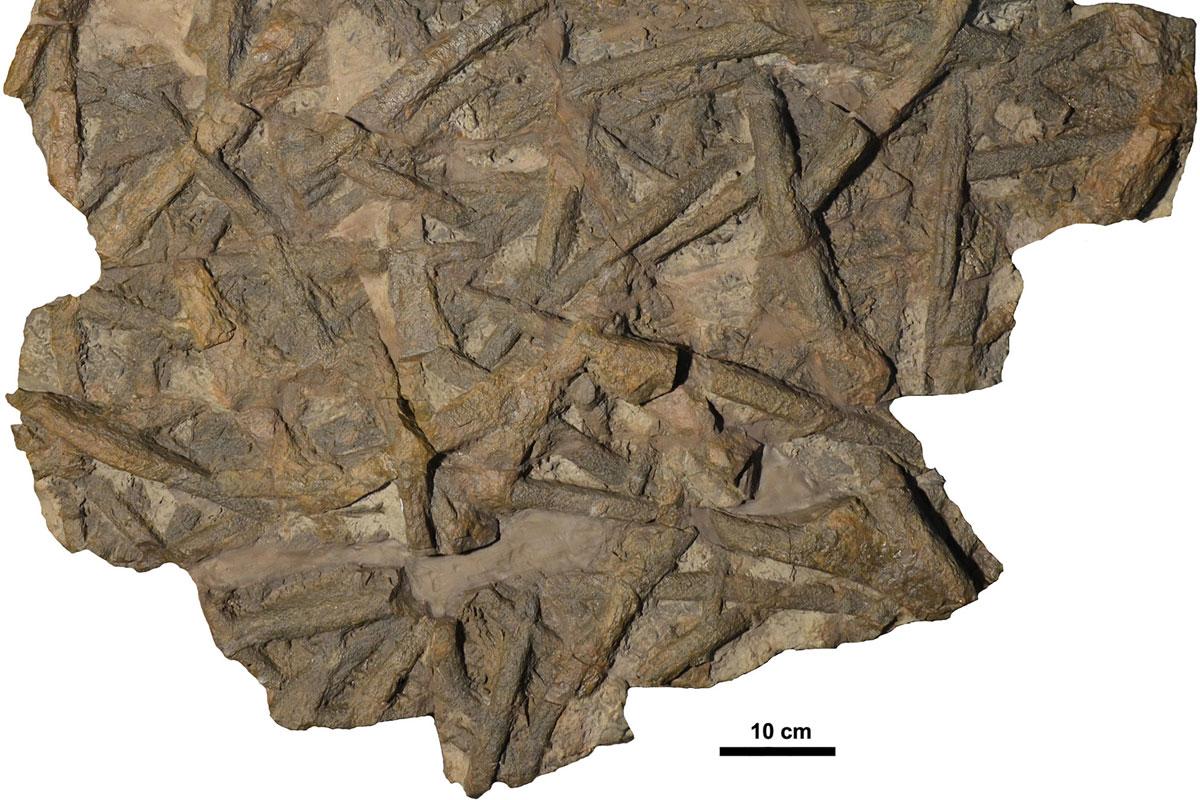Extinction events not only manifest themselves through losses in species diversity alone, but can also have lasting consequences for sediment properties, soil communities, nutrient cycles and thus entire ecosystems. Researchers of the Museum für Naturkunde Berlin present results in a recently published study in the journal Lethaia.
Cruziana reticulata is an arthropod‐related ichnospecies that is characterized by a conspicuous net‐like scratch pattern whose initial formation and later preservation require the presence of consolidated substrates in shallow marine fine‐grained bottoms. There are two scenarios in which epifaunal to shallow infaunal benthic organisms may access firm siliciclastic substrates: first, by exposure of the compacted bottom after erosion of the upper, water‐saturated and usually soft portion of sediment column; and, second, by primary fast substrate stabilization in the absence of biogenic sediment mixing. Whereas the first mode occurs throughout the Phanerozoic, the latter is only prevalent in marine bottoms during the Early Palaeozoic mainly as a consequence of poorly developed infaunal bioturbation. However, by eradicating burrowing organisms, mass extinctions are known (i.e. the end‐Permian extinction) to ‘reset’ intensity of ecospace utilization, which entails the return to this anachronistic style of trace fossil preservation in younger times. An earliest Carboniferous ichno‐assemblage dominated by Cruziana reticulata from Morocco attests the spread of firm substrates in the aftermath of the Hangenberg Event – a major extinction at the end of the Devonian period. Since evidence for erosion is lacking in accompanying sedimentary rocks and the ichno‐assemblage shows characteristics of opportunistic exploitation of the nutritious muddy seabed, we favour the interpretation of this assemblage to represent a post‐extinction ichnofauna. It shows that other taxonomically less severe mass extinctions may also exhibit transient but severe ecological effects in open marine ecosystems such as the collapse of vital sediment mixing. Such post‐extinction effects may distort the perception of the stratigraphical record as a firmground ichno‐assemblage often taken as evidence for submarine erosion and are crucial in highlighting sequence boundaries.
Publication: Hofmann R., Gutwasser, B., Hüneke, H., Korn D. 2019: Firm evidence for a post‐extinction ichnofauna: earliest Carboniferous Cruziana reticulata assemblage from the Anti‐Atlas of Morocco. https://onlinelibrary.wiley.com/doi/epdf/10.1111/let.12345
Free picture you get here:
http://download.naturkundemuseum-berlin.de/presse/Massenaussterbekonsequenzen
